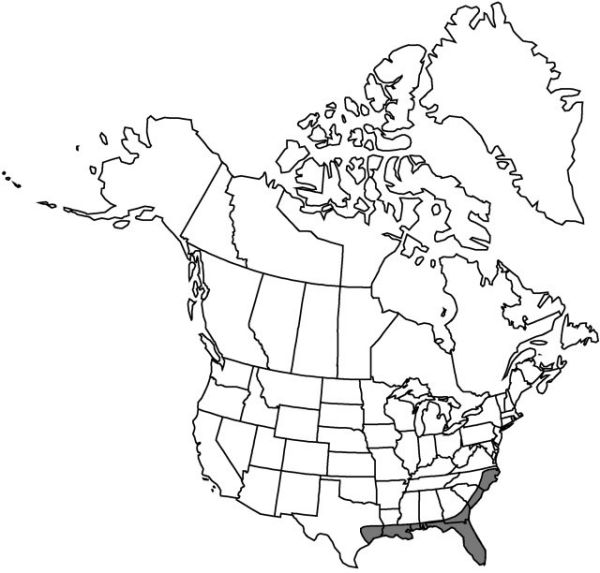Hypoxis wrightii
Rhodora 25: 140. 1923.
Leaves (0.5–)0.7–2.1(–2.6) mm wide, soft, usually stiff, sparsely to densely pubescent to pilose. Scape (20–)35–85(–150) mm, topped by 1 bract or, if flowers 2 or more, bracts more than 1, not opposite. Inflorescences racemose, 1–2(–3)-flowered; proximal 2 flowers, when present, not paired; bracts (2–)3–8(–15) mm. Flowers: tepals 4–8(–10) × (1.4–)2–3(–3.5) mm, shorter to longer than pedicel, less than 1.5 times as long as ovary; anthers (0.6–)0.9–1.8(–2) mm; ovary oblanceoloid, (2–)3–6(–8) × 1.5–2.5 mm, usually densely pilose; pedicel (1–)3–12(–21) mm, usually longer than bracts. Seeds dark brown, dull, 0.9–1.1(–1.3) mm, minutely muricate.
Phenology: Flowering spring.
Habitat: Pinelands, seasonally flooded prairies
Elevation: 0–100 m
Distribution

Ala., Fla., Ga., La., Miss., N.C., S.C., Tex., West Indies.
Discussion
In the southern part of its range, Hypoxis wrightii can be found flowering shortly after fire at any time of year. The name H. micrantha Pollard was misapplied to H. wrightii by A. E. Brackett (1923) and subsequent authors.
Selected References
None.